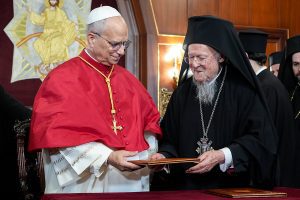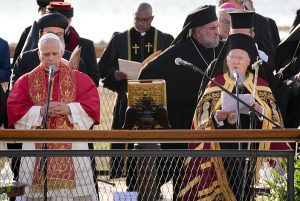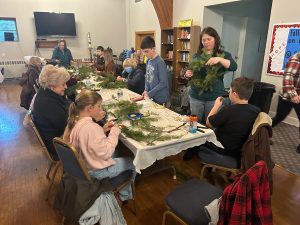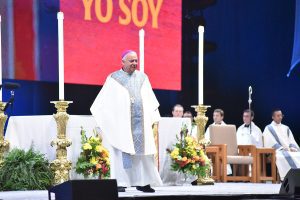ISTANBUL (CNS) – Pope Leo XIV, speaking to Christian leaders in Turkey, said he hoped they could meet in Jerusalem in 2033 to celebrate together the 2,000th anniversary of the death and resurrection of Jesus.
And, later in a joint declaration with Orthodox Ecumenical Orthodox Patriarch Bartholomew of Constantinople, he called on Christians of the East and West to finally agree on a common date for Easter. The pope and patriarch also appealed for an end to war.
The two met in Istanbul Nov. 29 with the Orthodox, Oriental Orthodox and Protestant leaders who had joined them the previous day in Iznik, site of the ancient city of Nicaea, to commemorate the 1,700th anniversary of the Council of Nicaea and the basics of the Nicene Creed, which all mainline Christians share.

The meeting with the leaders was held at the Syriac Orthodox Church of Mor Ephrem, which was inaugurated in 2023 — the first and only Christian church to be built in Turkey since the foundation of the Republic of Turkey as a constitutionally secular nation in 1923.
According to the Vatican press office, Pope Leo spoke to the leaders about having a Jubilee 2033 celebration together in Jerusalem.
The pope would like to celebrate “in the Cenacle, place of the Last Supper of Jesus with his disciples, where he washed their feet, and the place of Pentecost,” the press office said. But to facilitate the encounter, the leaders need to make progress in their efforts toward full unity, the pope had told them, “citing his episcopal motto, ‘In Illo uno unum,'” or literally “In the One, we are one,” referring to faith in one Lord.
Pope Leo joined Patriarch Bartholomew again in the early evening in the Patriarchal Cathedral of St. George for a doxology prayer service of praise to God.
“Yesterday, and again this morning, we experienced extraordinary moments of grace as we commemorated, together with our brothers and sisters in faith, the 1,700th anniversary of the First Ecumenical Council of Nicaea,” Pope Leo said at the service.
“By remembering that highly significant event and inspired by the prayer of Jesus that all his disciples may be one,” the pope said, “we are encouraged in our commitment to seek the restoration of full communion among all Christians, a task that we undertake with God’s help.”
During the doxology, he said, “the deacon addressed to God the petition ‘for the stability of the Holy Churches and for the unity of all.’ This same petition will also be repeated in tomorrow’s Divine Liturgy. May God, the father of our Lord Jesus Christ, have mercy on us and indeed fulfill that prayer.”
The Council of Nicaea also set a common date for all Christians to celebrate Easter — on the first Sunday after the full moon following the spring equinox. But the Julian calendar, which is what Christians used in the fourth century, was increasingly out of sync with the actual solar year, so March 21 — generally assumed to be the date of the Northern Hemisphere’s spring equinox — gradually “drifted” away from the actual equinox.
In 1582, Pope Gregory XIII reformed the calendar, dropping 10 days and making the equinox fall on March 21 again. Most Eastern Christians did not adopt the new calendar though, leading to a situation where Easter occasionally is on the same day, but Eastern Christians’ celebration can be as much as four weeks later.
St. Paul VI and all the popes who succeeded him, including Pope Leo, have said the Catholic Church is open to accepting an Orthodox proposal for a common date for Easter.
In their joint declaration, the pope and patriarch said the anniversary of Nicaea should inspire “new and courageous steps on the path toward unity,” including finding that common date.
“We are grateful to divine providence that this year the whole Christian world celebrated Easter on the same day,” they said. “It is our shared desire to continue the process of exploring a possible solution for celebrating together the Feast of Feasts every year. We hope and pray that all Christians will, ‘in all wisdom and spiritual understanding,’ commit themselves to the process of arriving at a common celebration of the glorious resurrection of our Lord Jesus Christ.”
Part of the goal of Christianity, they also said, is to contribute to peace among all people.
“Together we fervently raise our voices in invoking God’s gift of peace upon our world,” they said. “Tragically, in many regions of our world, conflict and violence continue to destroy the lives of so many. We appeal to those who have civil and political responsibilities to do everything possible to ensure that the tragedy of war ceases immediately, and we ask all people of good will to support our entreaty.”








